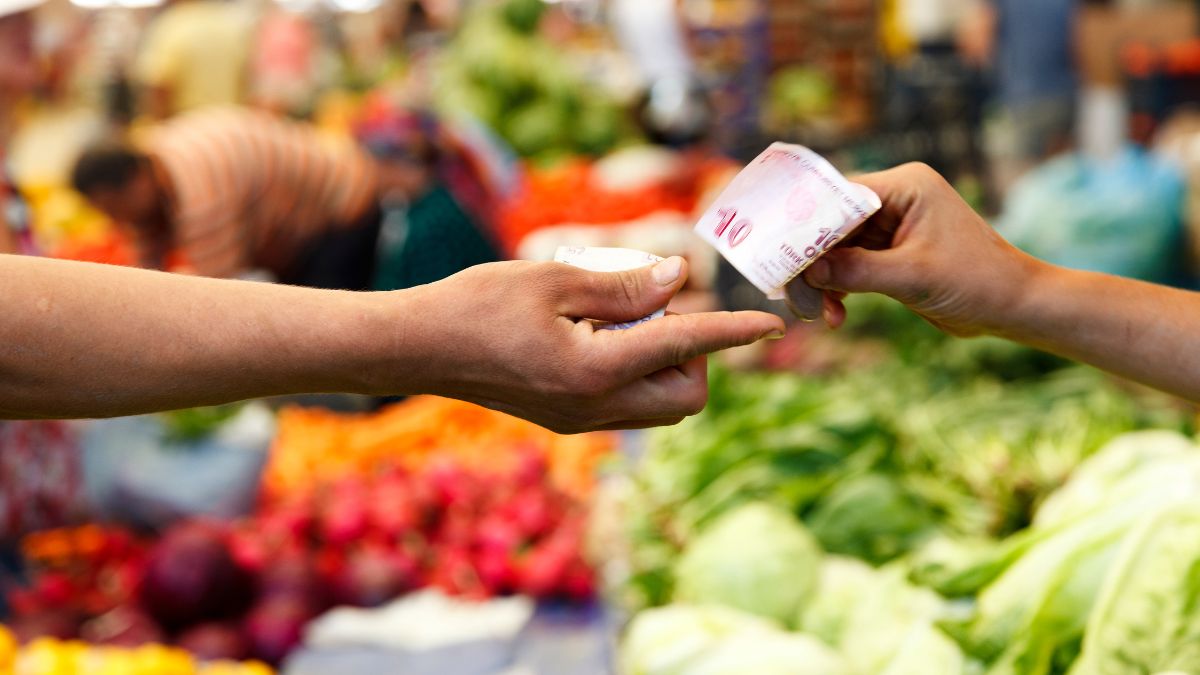We are back with the second edition of Virasat ki thali—a month-long series that aims to delve into the rich tapestry of culinary traditions in India and explore the stories behind iconic dishes. Well this week, we have your favourite thing to eat — a snack which seems so Indian, but guess what, the story of it’s origin isn’t that simple…
No matter how many fusions of samosa suffice(some of which are way too much), our basic aloo wala samosa with mint and tamarind chutney triumphs no matter what.
Delighting palates with its quintessentially Indian flavors, this delicacy whispers a captivating tale that reaches far beyond borders and time. It intertwines the threads of India’s rich history, embodying the harmonious dance of diverse cultures, migrations, and interactions that forged the vibrant tapestry of this remarkable nation. With every savory bite, you savor the essence of India’s captivating story, an enchanting symphony created by the fluid forces that shaped its very soul.
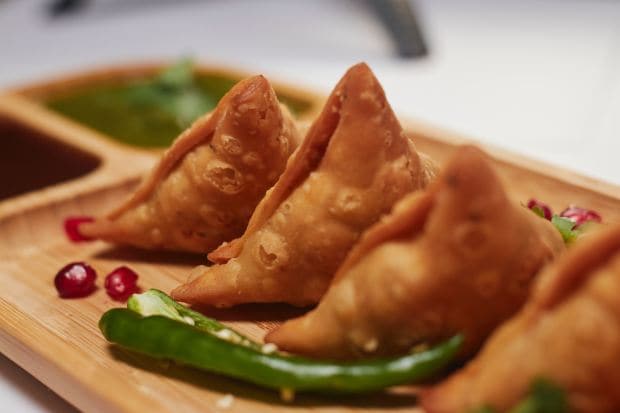
Delicious, mouthwatering, and oh-so-spicy, the Samosa has claimed its throne as the undisputed vegetarian snack of India. But have you ever wondered how this delectable, triangular delight found its way into our hearts and onto our plates? Join us on a journey through time as we dive into the fascinating history of the Samosa, straight from the annals of culinary heritage.
While the Samosa may have its roots elsewhere, its arrival in India is nothing short of a captivating saga.
The Origin of the Samosa
The Samosa, despite its strong association with Indian cuisine, did not originate in India. But how did this salted, spicy, and tasty food, fried in bubbling oil, reach India? The answer lies in tracing the origins of the Samosa back to its earliest known mentions in historical records.

According to Iranian historian Abul Fazi Behagi, the Samosa was first found around the 10th century. In his book Tariq E Behagi, he refers to it as ‘Sambosa’. From the 10th to 13th century, Arabic books referred to it as ‘Sambusak,’ which is similar to the Persian word ‘Sambosa.’ This pronunciation is still prevalent in Egypt, Syria, and Lebanon. The traditional Sambusak was half-moon shaped and filled with a variety of ingredients, including meat, onions, raisins, and mixed fruits. This delectable assembly was fried in hot oil, tantalizing the senses of those fortunate enough to taste it.
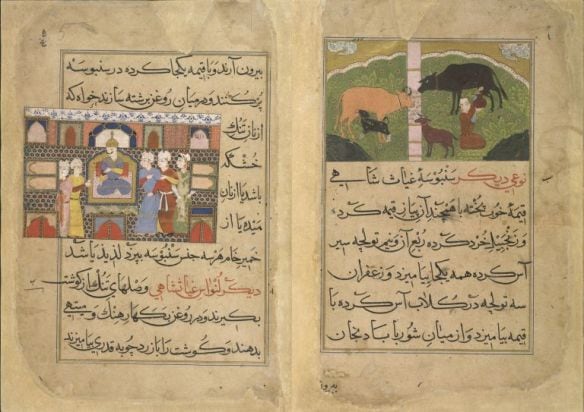
The Journey to India
Was the art of deep-frying food in oil brought to India from foreign lands? While it is believed that the art of deep frying was found in Egypt, the discovery of copper utensils in Harappa and descriptions of fried flour sweetmeats in the Rig Veda indicate that the practice of frying food in India was prevalent since ancient times. The Samosa, too, found its way to India through a historical process of cultural exchange.
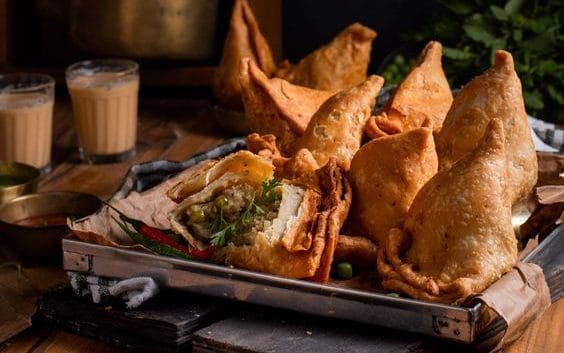
In the 14th century, traders from the Middle East arrived in Southern Asia, bringing with them various culinary influences. Among these influences was the soft and warm Sambosa. This delightful snack remained in the region through the centuries, gradually becoming integrated into Indian cuisine and culture. Notable figures like Amir Khusrau, a renowned poet and musician, became fans of the Samosa and mentioned it frequently in the context of royal food preparation. The Ain I Akbari, a detailed record of the administration of Emperor Akbar’s empire, cemented the Samosa’s place in the royal cuisine, making it a favorite among the subjects and a source of pride for the king.
The Samosa’s Global Presence
The Samosa’s popularity extended beyond the borders of India, captivating the taste buds of people in different regions and acquiring diverse names along the way. Ibn-Batuta, a famous traveler from abroad, wrote about Samosas during his journeys across India. In Nepal, it is known as Singoda, while in Myanmar, it is called Samusa. Arabia refers to it as Samsas, and Portugal gave it the name Chamucus. In Africa, it became famous as Sambusa, and in Israel, it is known as Sambusak. Despite its global presence, it is the Indian Samosa that remains the most famous among all its siblings.

The Potato Connection
But why is the Indian Samosa so famous? The answer lies in the humble potato. European explorers stumbled upon the potato in South America, brought it back to Europe, and introduced it to the rest of the world. However, the sweet potato, not the variety we commonly associate with Samosas, was the first to be discovered. The Native Americans called it ‘Batata,’ while the regular potato was called ‘Papa.’ This led to some confusion, as the famous botanist John Gerard mistook the potato for the sweet potato in 1597, referring to it as Batata. It wasn’t until the Portuguese brought potatoes to India in 1498 that the Indian subcontinent was introduced to this versatile tuber. However, it was not until the British arrived in the 19th century that Indians learned how to fully harness the potential of potatoes in their culinary creations. The marriage of potatoes and Samosas became a match made in culinary heaven.
The theory behind its triangular shape
Firstly, one theory suggests that the triangular shape of the samosa is inspired by the pyramids of Egypt. The samosa made its way to India during the Mughal era, which witnessed significant cultural exchanges between India and various other regions. It is believed that the Mughals, who had an affinity for intricate architecture, drew inspiration from the pyramids and introduced the triangular shape to samosas as a way to showcase their appreciation for the arts.
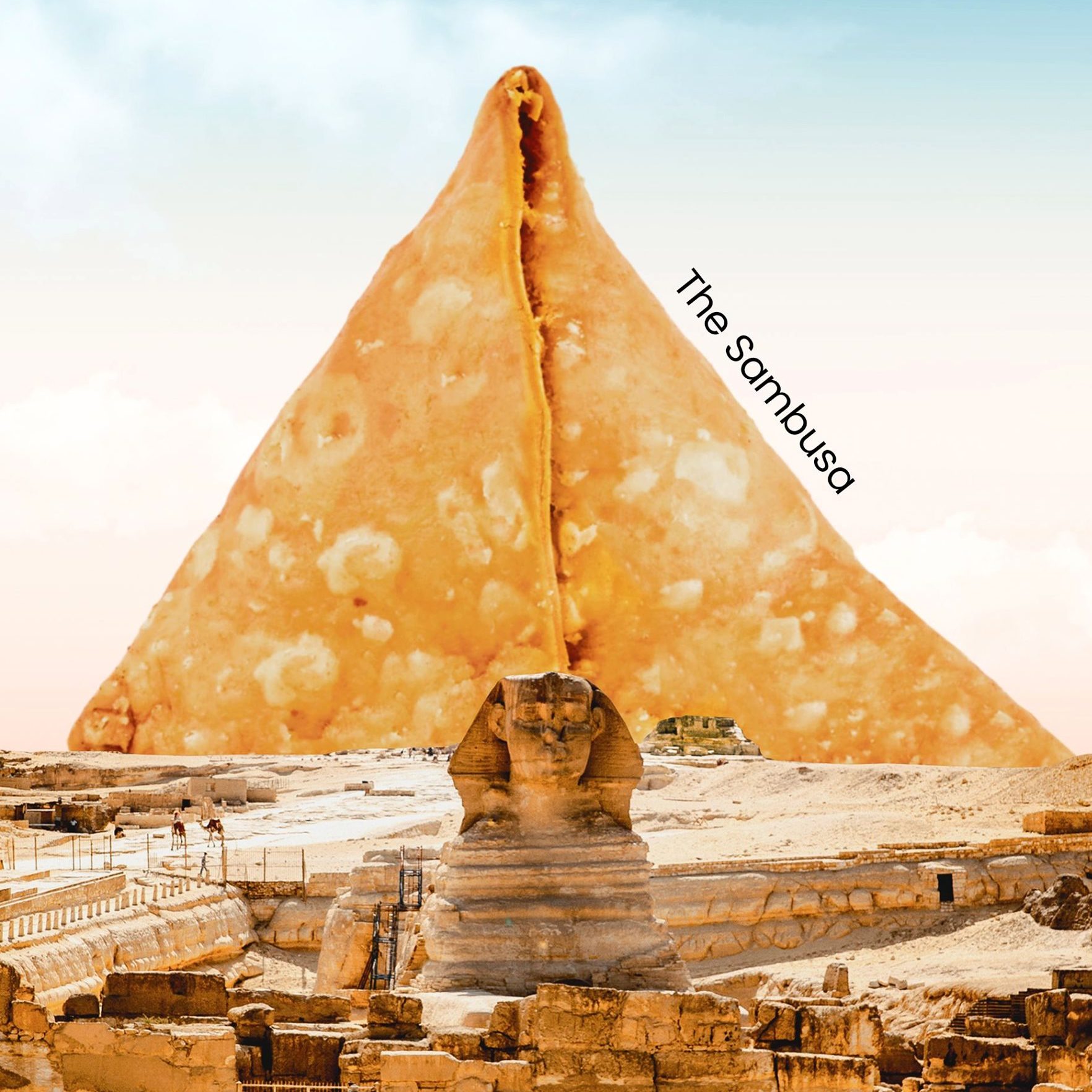
The artistry of samosa
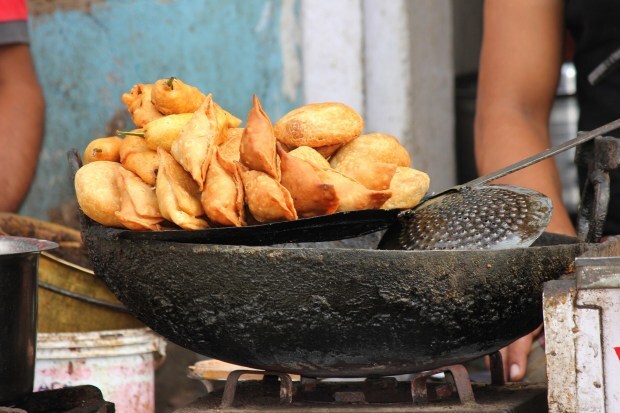
Like a painter with a palette of flavours, the samosa maker begins with a canvas of dough. With deft hands, they knead and caress, working the flour into a pliable masterpiece.
But the soul of a samosa lies not just in its dough; it resides in the hidden treasures within. The samosa maker, a culinary sculptor, delicately balances the flavours, curating a medley that tantalizes the taste buds. In a symphony of spices, coriander seeds whisper their vibrant notes, while cumin seeds add a subtle earthy undertone. Turmeric lends a golden hue, like a sunbeam captured in each fold, and chilli powder brings a fiery crescendo that ignites the senses.
While the most common filling for samosas is spiced potato and pea, there are numerous other creative fillings used across different regions. Some popular alternatives include minced meat (such as lamb or chicken), paneer (Indian cottage cheese), lentils, vegetables like cauliflower or spinach, and even sweet fillings like chocolate or nuts in some dessert versions.
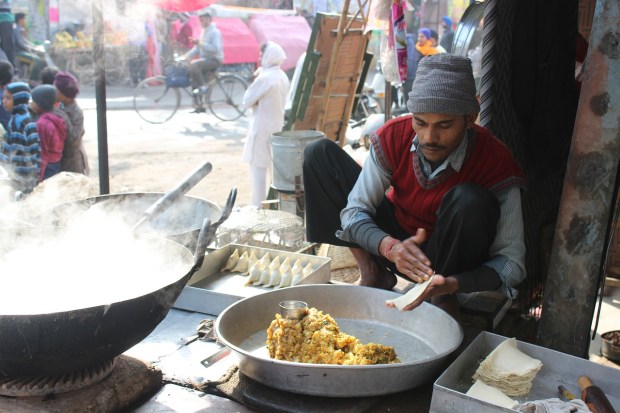
A Beloved Snack for All
No matter where the Samosa originated from, it has found a special place in the hearts and taste buds of people across India. From royalty to common folk, everyone relishes the delight of biting into a warm, crispy Samosa filled with a flavorful mixture of potatoes, green peas, and spices. The Samosa has become an iconic vegetarian snack, a symbol of Indian culinary creativity, and a testament to the rich cultural tapestry that makes up the country.
Best places to eat samosa in India
1. Chandni Chowk, Delhi
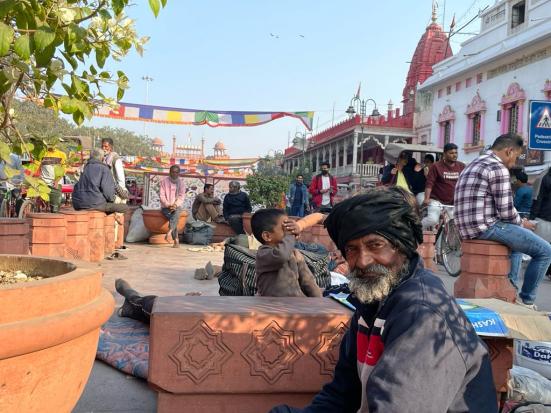
2. Sharma Chai is known for their Bun Samosa, Lucknow
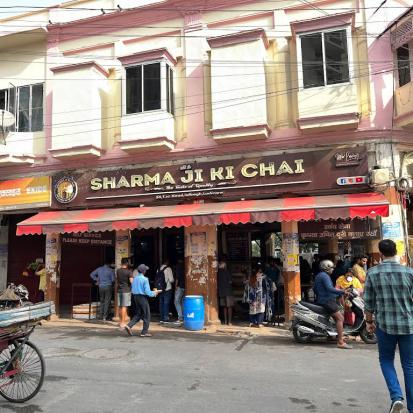
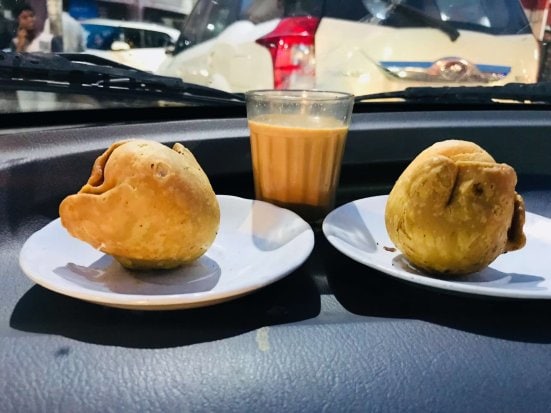
3. Tewari Sweets, Kolkata serves the best samosa in town
4. The Samosa Factory, Chennai
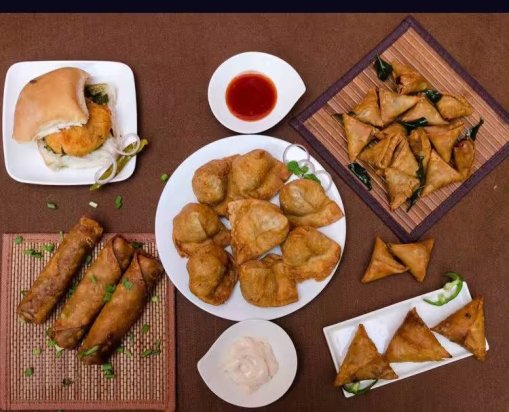
So, the next time you savor a Samosa, remember that you are not only enjoying a delicious snack, but you are also experiencing the complex history and diverse influences that have shaped this culinary masterpiece. From foreign lands to Indian shores, from royal courts to bustling streets, the Samosa carries within it the stories of migration, exchange, and the ever-evolving nature of cuisine.
Regardless of their foreign origins, both these culinary delights found their true home in India, captivating the taste buds of royalty and commoners alike. Let it serve as a reminder that culinary traditions have the power to transcend borders, enriching our lives with their flavorsome tales of heritage.






